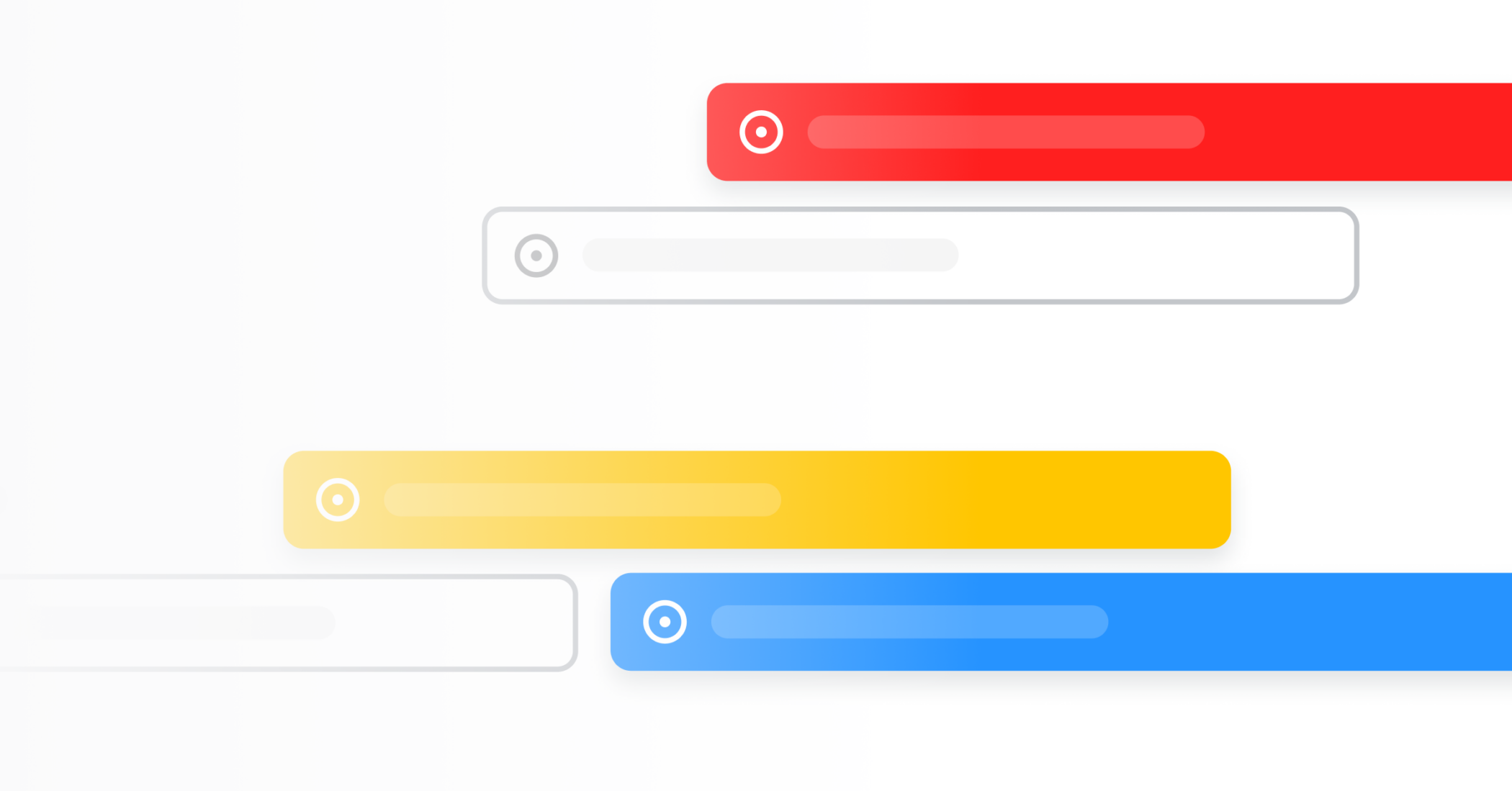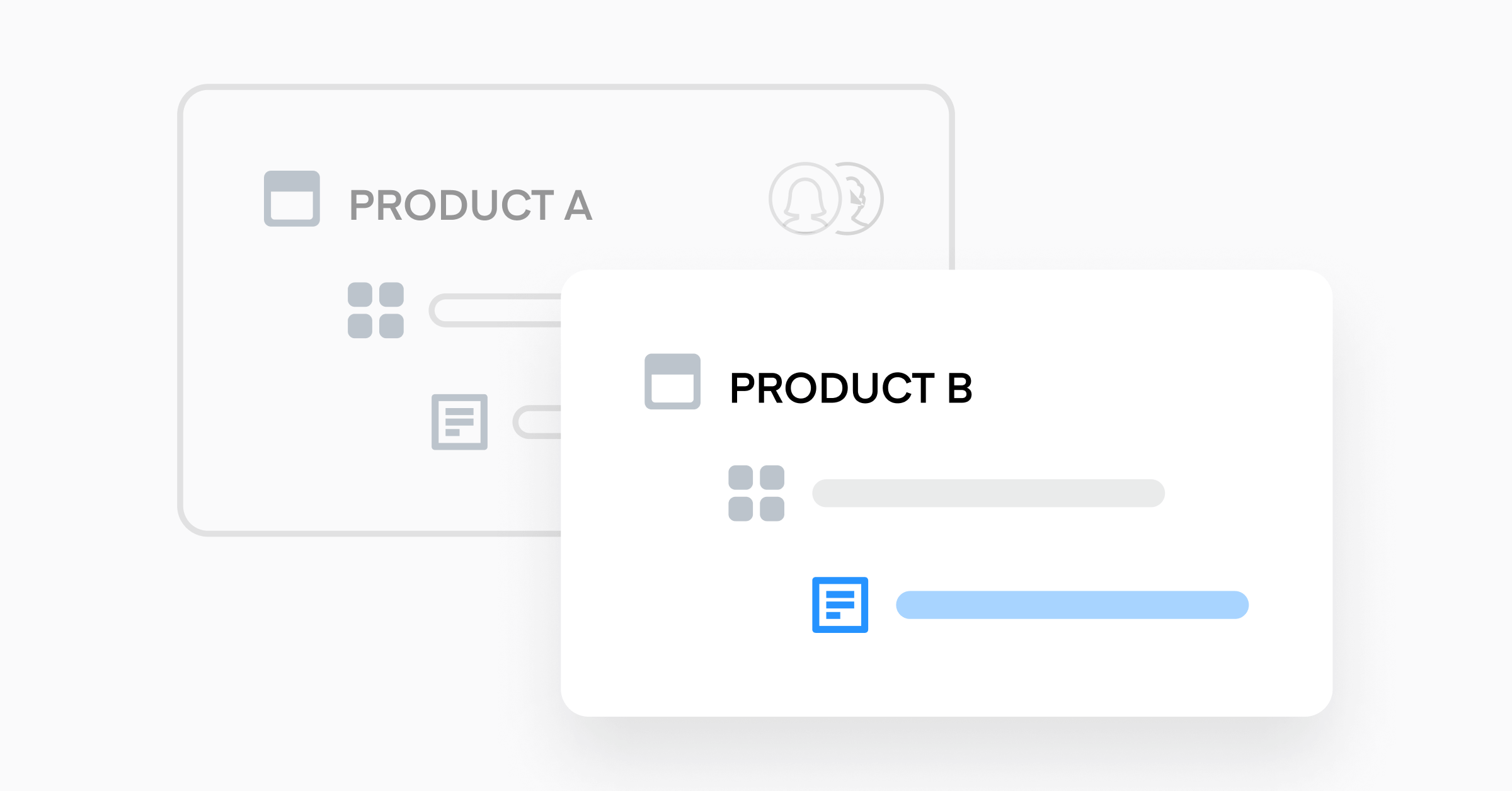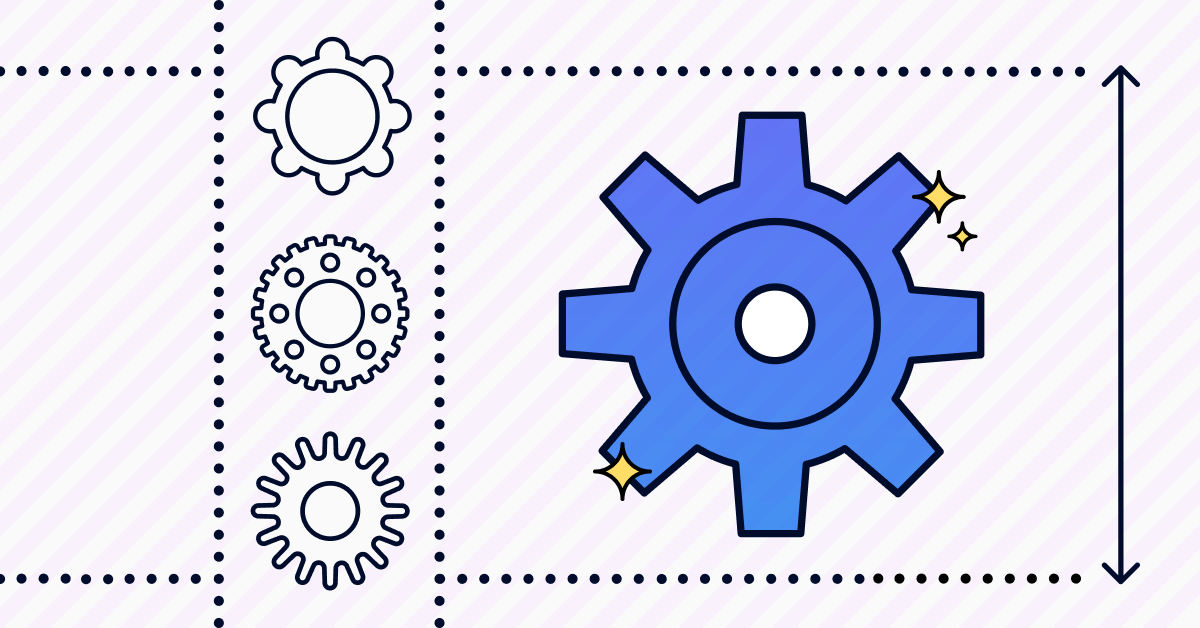Mastering Product Strategy Roadmaps: Planning and Execution

A product strategy roadmap isn’t just a document; it’s a strategic guide that steers businesses towards their desired outcomes. Unlike the rigid paths laid out by project roadmaps, product strategy roadmaps are fluid and responsive so that you can align your product team’s efforts with necessary business objectives.
Like an actual map, a product roadmap serves as a visual aid to help steer everyone towards their destination: the goal. But their true purpose goes beyond just being a navigational guide; they communicate the rationale for the product or feature, the shared vision (the “why”) behind how it will serve your customers and reach your business goals.
They help ensure interdepartmental alignment of the overarching vision, business outcomes, and trajectory (e.g., timelines, time effort estimates, feature prioritization, etc.) for an individual product or product suite across a designated time frame. Product roadmaps adopt a high-level, long-term perspective. Project roadmaps, in contrast, are short-term, focusing on output over outcome.
Your business can only build a clear and effective product strategy roadmap if they have a solid—and scalable—product roadmap planning strategy. Let’s dive into how to do this effectively.
What’s the Right Product Strategy Roadmap for Your Business?
Various types of product strategy roadmaps exist, each tailored to specific organizational needs or stages of a product’s lifecycle. Here are some common types:
Visionary / Company Roadmaps
This communicates the directional trajectory of a product or product line at a higher organizational level, without delving into specific features or timelines. It allows everyone to get on the same page quickly, and can even improve company morale around a shared vision.
When to use: Use cases for these tend to be higher level than product delivery roadmaps, providing a visualization that can benefit many stakeholders within an organization. If you need to quickly explain to key stakeholders where your business is headed, this will do.
Example: Product Portfolio roadmaps offer a strategic overview of all products within a company, demonstrating how products relate to one another and align with overarching business goals.
Product Delivery Roadmaps
This is a detailed plan outlining the timeline and features related to the development and release of a product. It provides granular insights into technology changes, UX/UI improvements, resource allocation, and more. It enables effective resource planning, aligns development efforts, and offers transparency into the delivery lifecycle.
When to use: Use when detailing the execution plan to your product development teams.
Example: Kanban roadmaps facilitate tracking features across the discovery and delivery lifecycle, organizing them by status.
Customer-Focused Roadmaps
This communicates upcoming product changes and developments directly to customers, often tailored to specific segments or target markets. These roadmaps offer a customer-friendly overview of strategic objectives and serve as a proactive way to address customer needs and expectations. By providing insights into future enhancements, you can improve customer communication and loyalty while better managing expectations.
When to use: Use when engaging directly with customers to communicate product changes and improvements. It may also be beneficial to use on a quarterly basis these to preempt competitor innovations.
Example: Release Plan roadmaps for customers give them a sneak peek into when to expect new features or updates.
Whether outlining organizational vision, detailing delivery timelines, or directly engaging with customers, a thoughtful combination of these product strategy roadmap types ensures an end-to-end approach to building and iterating your products—from ideation all the way through launch.
Making the Product Strategy Roadmap Work for Your Product (Not the Other Way Around)
The key components of successful product roadmap planning include the vision, timelines, features, dependencies, competitive analysis, resource allocation, iterative processes, key performance indicators (KPIs), and stakeholder communication plans. With these, your business will reap the following benefits:
- Save time: Aligning features, timelines, and other components with the vision ensures that the product’s development is purposeful and your team’s valuable time isn’t wasted on the wrong bets
- Accelerate time-to-market: Ensure timely releases and mitigate launch headaches with predetermined deadlines that keep dependencies and iterations in mind
- Reduce churn & increase user adoption: Well-planned features, tied to strategic goals and customer needs, enhance the product’s value proposition and competitiveness in the market
- Improve efficiencies: Managing dependencies and resources helps the dev process run smoothly
Product Strategy Roadmap Breakdown
Incorporating all these factors into your product roadmap plan creates optimal alignment that fosters collaboration and agility. This is the underlying benefit that underpins all the outputs your business wants:
- Rollout of new features and improvements based on accurate data
- Faster time-to-market with superior outcomes for users
- Real-time user input & continuous improvement
- Measurable insights into user adoption, revenue growth, and customer satisfaction
Vision and Objectives
Vision: Product strategy roadmaps begin by outlining the long-term vision for the product. This is a high-level, aspirational statement that captures the intended impact and positioning of the product in the market to unite everyone around a common goal.
Objectives: These are specific, measurable goals that contribute to the realization of the product vision. Objectives serve as milestones and guide the strategic decision-making process.
Timeline and Phases
Timelines: This helps teams organize their efforts and resources efficiently. Provide release plans of when each feature or enhancement within your product portfolio is expected to go live to guide teams and stakeholders in planning and coordination. Prioritization is key; the timelines should make it clear which initiatives or features need to be done first.
Phases: Products often go through distinct phases in their lifecycle, such as development, launch, growth, and maturity. Product strategy roadmaps segment the timeline into these phases, with each phase having its set of goals and activities.
Features and Enhancements
Features: Detail the key features and functionalities planned for each phase of the product’s development. This provides a clear understanding of what the product will offer to meet customer needs and when these offerings will be introduced.
Enhancements: Include plans for improving existing features based on user feedback, technological advancements, or market shifts.
Dependencies and Risk Analysis
Dependencies: Understand how various stakeholders, project owners, and individual tasks depend on one another. Identify the bottlenecks; what needs to get done before something else can be accomplished. Your timelines must take dependencies into consideration.
Risk Analysis: Identify potential roadblocks that could impact development so that risk mitigation strategies can be formed.
Market and Competitive Analysis
Market Analysis: Take into account the current market conditions, trends, and customer needs when creating your product roadmap. This helps ensure the product remains relevant and competitive.
Competitive Analysis: Understanding the competitive landscape helps shape the product strategy. Highlight key differentiators and strategies to stay ahead in the market.
Resource Allocation
Successful execution requires appropriate allocation of resources, including individuals / teams, budget, and technology. To ensure end-to-end alignment with strategic goals, include resource allocation plans for each phase.
Feedback and Iteration Process
Make a plan for how real-time feedback gets acted upon—how it will be gathered and incorporated into the product strategy roadmap. This enhances the adaptability.
Metrics and Key Performance Indicators (KPIs)
Metrics: Product strategy roadmaps define the metrics that will be used to measure the success of the product. These can include user adoption rates, revenue growth, customer satisfaction scores, and other relevant performance indicators.
KPIs: Key Performance Indicators are specific metrics tied to critical objectives. They serve as benchmarks for evaluating progress and success at each stage of the product’s lifecycle.
Stakeholder Communication
Include a plan for regular updates and communication to keep everyone informed and engaged. Align on the cadence (e.g., daily, weekly, monthly) and communication channels.
How a Leading Enterprise Automation Company Empowers Everyone to Think Like a Product Manager
Productboard helps product managers understand what customers need, prioritize what to build next, and unite all stakeholders around a common goal: Their product roadmap strategy. The solution serves as a single source of truth for all the elements that make up your roadmap. Productboard ingests all your customer feedback, user research, milestones, and market insights to seamlessly incorporate them into the planning process, helping you prioritize tasks based on customer needs.
UiPath holds all of their relevant product data, including their roadmaps, in Productboard. In the spirit of collaboration that a proper product strategy requires, they made their roadmap available to everyone in the organization. “The reason we do that is because we consider everyone a product manager in UiPath. They have a responsibility to build a better product, so they need to know what is coming up, what was launched, what we’re thinking of investing in,” explains Product Lead Mircea Andrei Grigore.
As UiPath continues to grow and the product team has expanded to numerous offices worldwide, all internal employees can collaborate and communicate seamlessly no matter where they are located.
Building Roadmap Best Practices Into Process DNA
Here are the keys to building a scalable product strategy roadmap:
- Define business objectives: Clear objectives guide decisions, aligning every feature with overarching business goals and preventing a disjointed roadmap
- Understand customer needs: Prioritizing features that address real user problems not only focus your product strategy, but also increases the likelihood of user adoption
- Establish a vision: A compelling vision acts as a guiding light, aligning decisions with long-term goals and preventing the product strategy from losing sight of the bigger picture
- Collaborate across teams: Collaboration with cross-functional teams brings varied insights, preventing tunnel vision and fostering shared ownership and commitment to the product strategy
- Prioritize: Ruthless prioritization prevents feature bloat, focusing on initiatives that deliver the most value for a competitive and impactful product
- Ensure flexibility and adaptability: An adaptable roadmap allows quick adjustments in response to changes, ensuring ongoing relevance in dynamic markets
- Communicate transparently: Transparent communication builds trust and manages expectations, aligning stakeholders by explaining roadmap decisions and the product’s direction
- Include key components in the roadmap: Milestones provide progress, while dependencies highlight intricacies; a well-rounded roadmap needs a comprehensive view for stakeholders to grasp the strategy
- Use visual tools effectively: Visual elements enhance understanding, making complex information digestible for stakeholders through tools like Gantt charts or thematic categorization
- Monitor and gather feedback continuously: Continuous monitoring and feedback collection keep the roadmap relevant, allowing iterative improvements and preventing it from becoming outdated.
Create an Agile Product Strategy Roadmap with Productboard
Productboard facilitates collaboration, transparency, and efficiency. Save time and improve efficiencies to ultimately accelerate your time-to-market, reduce customer churn, and increase user adoption.
Productboard does more than help you build strategic product roadmaps. It helps you decide what should even go on the roadmap in the first place. That’s why leading businesses use Productboard to scale their product roadmap planning. Take a look at our Product Roadmap Guide to see how your product team can get better aligned with business outcomes.




